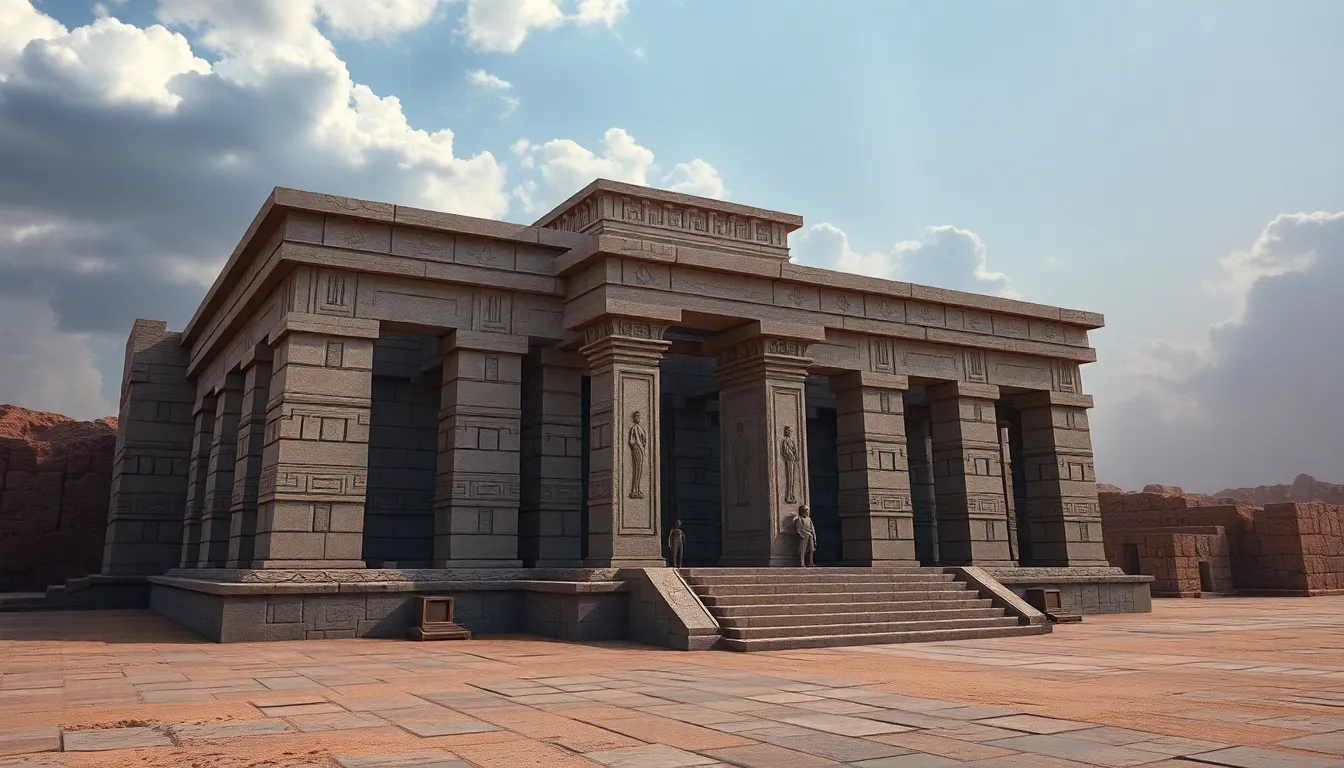The Sacred Geometry of the Temple of Nephthys: An Exploration of Design and Symbolism
I. Introduction
The Temple of Nephthys, dedicated to the ancient Egyptian goddess of the same name, stands as a remarkable testament to the architectural prowess and spiritual depth of ancient Egypt. This temple, often overshadowed by more famous structures like the pyramids and the Temple of Karnak, embodies the intricate relationship between sacred geometry and religious practice in ancient Egypt. Sacred geometry, the mathematical principles underlying the design of sacred spaces, played a crucial role in the construction of temples, influencing their spiritual significance.
The purpose of this article is to delve into the sacred geometry of the Temple of Nephthys, exploring its historical context, architectural layout, and the symbolism embedded within its design. By understanding these elements, we can gain insights into the ancient Egyptians’ worldview and their reverence for the divine.
II. Historical Context of the Temple of Nephthys
The Temple of Nephthys is located near the ancient city of Heliopolis, a center of worship for the sun god Ra. Discovered in the late 19th century, the temple was once a vibrant place of worship, dedicated to Nephthys, the goddess associated with the night, death, and the protection of the dead.
Nephthys played a critical role in Egyptian mythology, often depicted as a protective figure, especially during funerary rituals. She was the sister of Isis and Osiris, and her presence ensured the safe passage of souls into the afterlife.
The construction of the temple dates back to the New Kingdom, around 1550-1070 BCE. It served not only as a place of worship but also as a center for the community, where rituals and festivals were celebrated to honor the goddess and ensure her blessings.
III. Principles of Sacred Geometry
Sacred geometry refers to the use of geometric shapes and proportions that have spiritual significance. In ancient Egyptian architecture, this geometry was not merely aesthetic; it was believed to connect the material and spiritual worlds.
- Definition and Importance: Sacred geometry is the study of geometric shapes that are seen as sacred and imbued with spiritual significance.
- Key Geometric Shapes: Common shapes include circles, squares, and triangles, each holding unique meanings in the context of creation and the cosmos.
- Connection to Cosmology: The Egyptians believed that these shapes reflected the order of the universe, embodying the mathematical principles that govern existence.
IV. Architectural Layout of the Temple
The design of the Temple of Nephthys showcases a harmonious blend of form and function, emphasizing the sacred geometry that underpins its structure. The temple typically follows a rectangular plan, with a series of interconnected halls and sanctuaries.
Key geometric patterns and proportions can be observed throughout the layout:
- Symmetry: The temple’s design exhibits perfect symmetry, a reflection of the balance that is central to Egyptian cosmology.
- Proportions: The ratios of various sections of the temple are meticulously calculated, often aligning with the golden ratio, creating a sense of harmony and beauty.
The symbolic meanings behind the layout extend beyond aesthetics. Each section of the temple is carefully positioned to facilitate connection with the divine, enhancing the spiritual experience of worshippers.
V. Symbolism of Specific Geometric Elements
Within the Temple of Nephthys, specific geometric elements carry profound symbolism:
- Circles: Represent eternity and the cyclical nature of life and death.
- Squares: Symbolize stability and the material world, grounding the spiritual aspects of the temple.
- Triangles: Often associated with the trinity of gods, representing the connection between the earthly and the divine.
The golden ratio, an important principle in sacred geometry, can also be found in the proportions of the temple. This ratio, believed to embody beauty and harmony, enhances the aesthetic appeal of the structure while connecting it to the larger cosmos.
The interplay between geometry and sacred symbolism creates a rich tapestry of meaning, reflecting the ancient Egyptians’ deep understanding of the universe.
VI. The Role of Orientation and Astronomy
The orientation of the Temple of Nephthys is meticulously aligned with celestial bodies, enhancing its sacred geometry. This alignment is crucial for various religious ceremonies and reflects the Egyptians’ reverence for the cosmos.
- Alignment with Celestial Bodies: The temple is oriented to align with significant astronomical events, such as the rising of specific stars.
- Significance of Solstices and Equinoxes: These events were marked by rituals that harnessed the power of the changing seasons, reinforcing the connection between the temple and the natural world.
- Enhancing Sacred Geometry: This orientation not only serves practical purposes but also enhances the spiritual experience of worshippers, creating a cosmic connection.
VII. Modern Interpretations and Relevance
Today, there is a renewed interest in sacred geometry, both in architecture and spiritual practices. The principles demonstrated in the Temple of Nephthys continue to influence contemporary design and philosophies.
- Contemporary Interest: Modern architects and spiritual practitioners explore sacred geometry as a means to create spaces that foster connection and tranquility.
- Influences on Modern Architecture: The temple’s design principles can be seen in various modern structures that aim to achieve harmony through geometric forms.
- Preservation and Study: Ongoing archaeological efforts focus on the preservation of the Temple of Nephthys, ensuring that its legacy and teachings endure for future generations.
VIII. Conclusion
The Temple of Nephthys stands as a remarkable embodiment of sacred geometry, reflecting the ancient Egyptians’ understanding of the cosmos and their spiritual beliefs. The intricate designs and alignments serve not only practical purposes but also reinforce the temple’s role as a sacred space where the divine and earthly realms converge.
As we reflect on the enduring legacy of ancient Egyptian architectural principles, we are reminded of the profound connection between geometry and spirituality. The exploration of sacred geometry invites us to further investigate how these principles can inform our understanding of the universe and our place within it.




